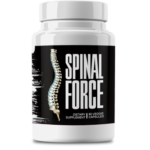This Village-Made Chinese Pain Reliever Eliminates Back And Joint Pain!
How to Alleviate Pain in Back of Knee When Walking

Getting to the Bottom of That Pesky Pain Behind Your Knee
Feeling a twinge of pain in the back of your knee while walking? It's not just annoying, it can really throw a wrench in your daily activities. Whether you're a walking enthusiast, a runner, or someone who just enjoys a leisurely stroll, it's important to pinpoint the cause and find ways to manage it. Let's dive into why this pain occurs, how to spot it, and the best ways to tackle it head-on.
Why Does the Back of My Knee Hurt When I Walk?
That pain you're feeling can come from a number of different sources. Here are some usual suspects:
- Baker's Cyst: This is a fluid-filled lump that can cause swelling and a tight feeling right behind your knee.
- Hamstring Tendonitis: This happens when the tendons connecting your hamstring muscles to your knee get inflamed.
- Meniscus Tear: If the cartilage cushioning your knee is damaged, it can lead to pain and stiffness.
- Arthritis: Both osteoarthritis and rheumatoid arthritis can wreak havoc on your knee joint with pain and swelling.
How Your Walking Style Impacts Knee Pain
Believe it or not, the way you walk plays a big role in knee health. Bad posture, a wonky gait, or shoes that don't fit right can make that knee pain worse. When you walk, your knees take on the brunt of your body's weight. If something's off, it can lead to extra stress on the joint. So, keeping an eye on your walking form and making sure your shoes have good support can go a long way in easing the pain.
Spotting Symptoms: What to Look Out For
Knowing the signs can help you get ahead of the pain. Keep an eye out for:
- Swelling or puffiness behind the knee
- Stiffness or trouble moving your knee
- Clicks or pops when you move
- Pain, whether sharp or dull, when bending or straightening your knee
Getting a Handle on What's Causing Your Knee Pain
Figuring out what's behind your knee pain is the first step to fixing it. Once you know the cause, you can tailor your approach and prevent things from getting worse.
Why You Should See a Pro for Knee Pain
If that pain in the back of your knee won't quit, it's time to see a healthcare professional. A doctor or orthopedic specialist can give you a thorough check-up and suggest the best treatment options for your situation.
Tests and Scans: Getting the Full Picture
Sometimes, tests like X-rays, MRIs, or ultrasounds are needed to figure out what's going on inside your knee. These scans give a detailed look at your knee's structure, helping to spot any issues or injuries.
Checking Your Own Knee: Simple Self-Tests
While a professional diagnosis is best, you can do a few things at home to assess your knee pain. Look for swelling, gently press around your knee to see if it’s tender, and note how your pain changes with different activities.
Home Remedies That Can Help Ease Knee Pain
Many folks find that some simple home remedies can offer quick relief and help manage those nagging symptoms.
Give It a Rest: Elevation Works Wonders
Taking it easy on that knee is key to reducing swelling and avoiding more injury. Elevating your leg above your heart can help by moving blood away from the area.
Ice and Heat: A Dynamic Duo for Knee Pain
Switching between ice and heat can work wonders. Ice helps reduce swelling and numb the pain, while heat relaxes muscles and boosts flexibility. Use ice for 15-20 minutes every few hours in the early stages, then switch to heat after a few days.
Over-the-Counter Relief: Meds for Knee Pain
Over-the-counter meds like ibuprofen or acetaminophen can help ease the pain and bring down swelling. Just follow the instructions and check with a doctor if you're unsure about possible interactions or if you have other health issues.
Exercises to Ease the Ache in Your Knee
Incorporating some targeted exercises into your routine can help build up the muscles around your knee, providing support and easing the pain.
The Power of Stretching for Flexible Knees
Regular stretching can keep your knees flexible and stave off stiffness. Focus on stretching your hamstrings and calves, as they support your knee joint. Hold each stretch for 20-30 seconds and repeat them a few times a day.
Strength-Building Exercises for Solid Support
Exercises like leg lifts and wall squats can strengthen the muscles around your knee, giving you better stability and less pain. Just make sure to use the right form to avoid extra strain.
Low-Impact Workouts: Keeping Fit Without the Strain
Low-impact activities like swimming or cycling keep you fit without putting too much pressure on your knees. They’re great for cardio health and improving muscle endurance, supporting overall knee health.
When Home Remedies Aren't Enough: Professional Treatments
If home remedies and exercises aren't cutting it, you might need professional treatments to tackle persistent knee pain.
Physical Therapy: A Game-Changer for Knee Pain
Physical therapy can be incredibly effective. A therapist will create a personalized exercise plan aimed at boosting your strength, flexibility, and mobility.
Considering Surgery for Severe Knee Pain
For severe, ongoing pain, surgery might be on the table. Procedures like arthroscopy or knee replacement can fix underlying problems and get you back on your feet.
Exploring Alternative Therapies for Relief
Alternative treatments, such as acupuncture and chiropractic care, offer relief for some people. These approaches focus on holistic pain management and can complement traditional medical treatments.
Keeping Future Knee Pain at Bay
Prevention is your best bet against recurring knee pain. Making some smart lifestyle changes can support long-term knee health.
Footwear and Orthotics: The Right Support Makes a Difference
Wearing the right shoes and considering custom orthotics can align your feet and legs properly, reducing knee stress. Look for shoes with good cushioning and arch support for all activities.
Walking Smart: Tips to Keep Your Knees Happy
Walking safely can help prevent knee injuries. Keep a steady pace, maintain good posture, and slowly increase your walking distances to avoid overdoing it.
Lifestyle Tweaks for Healthy Knees
Staying at a healthy weight, exercising regularly, and keeping hydrated are key lifestyle changes for knee health. A diet rich in anti-inflammatory foods also supports joint health.
Knowing When to Get Help for Knee Pain
It's important to know when to seek professional help so you can effectively manage knee pain and avoid long-term issues.
Red Flags: When Knee Pain Means Trouble
Get medical help right away if you have severe pain, can’t put weight on your knee, or notice any deformities. These could signal a serious injury or condition.
When Your Knee Pain Needs Urgent Care
If your knee pain sticks around despite home treatment, or if you see signs like fever or redness, check in with a healthcare provider. These could indicate an infection or other medical concerns.
The Cost of Ignoring Knee Pain
Brushing off knee pain can lead to chronic issues or more damage, potentially requiring more invasive treatments later on. Early action is crucial for staying mobile and enjoying life.
Wrapping Up
Understanding and tackling that pesky pain in the back of your knee is key to staying active. With the right diagnosis, effective home remedies, targeted exercises, and professional help, you can ease the pain and ward off future flare-ups.
Key Takeaways
Spot symptoms early, see healthcare pros for persistent pain, and use home remedies plus exercises to ease discomfort. Prevent knee issues with smart lifestyle choices and supportive footwear.
Final Thoughts
Don't let knee pain slow you down. Get proactive about understanding and managing your condition, so you can keep enjoying walking and other activities without a hitch. Got tips or experiences to share? Drop them in the comments below or reach out for personalized advice.








